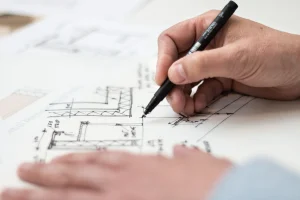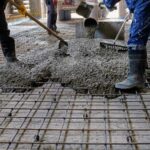Stone, concrete, and masonry are the most popular types of Retaining Walls Melbourne. The location of the wall, the length of the wall’s stay, and your aesthetic preferences will all play a role in the materials you choose. A retaining wall holds soil in place and keeps it in place in any area with a sloping hill. The base of the wall will usually have cutouts similar to retaining walls found throughout many gardens.
Concrete-Concrete forms the majority of walls. This is typically created by combining aggregate materials with reinforcements (either iron or steel) that’s then poured into a mold. After the concrete dries, it is cured and set to form a strong wall. Concrete treated with pressure is set to create a rigid surface that can be used in many landscaping applications. The most common applications include walkways, pool edging, retaining walls, driveways, patio walls, garages, retaining walls around wells, retaining walls around basements, and retaining walls to retain fill material such as clay tiles or soil.
Stone-The most common form of stone used in constructing retaining walls is granite. Granite is also used to decorate garden walls. In the past, stone was used for all purpose construction purposes, but today it is primarily used for retaining walls due to the sturdiness that it provides. Stone is an affordable and versatile choice because of its affordability.
Timber can be easily kiln dried, pressure-treated and cured. This makes it an ideal material to use for construction. It is extremely stable, making it ideal for both home centers and businesses. Timber is cheaper than stone. It is also more cost-effective than stone.
Concrete is the traditional material used for building retaining walls. It is strong, durable, versatile, resistant to decay, stain, and weathering, and requires little to no maintenance. Concrete is not stained or finished like wood. Concrete can be easily replaced if it starts to chip unlike wood which eventually rots from moisture. Concrete is also available in an assortment of colors and designs, which allows homeowners to create a unique design without much difficulty.
Soil Type Landscaping projects that require retaining walls typically require proper drainage. Excessive water can build up on exterior walls, causing mold and decay. Proper drainage during any type of climate change is crucial. Your yard could be filled with rain and snow, which can lead to costly problems. Proper drainage is essential to avoid excessive water buildup. This can lead to mold or mildew. Most homeowners choose concrete because it is the most durable and resilient of all materials, and it is also a fairly affordable option.
Weathering. Concrete is more resilient to deterioration than tile or linoleum. Linoleum and tile must be cleaned and re-sealed every few years, while concrete can simply be painted to retain its appearance. Concrete will slowly turn to a silvery gray color, but it is durable and can withstand severe weather conditions. If you are concerned about the appearance of your retaining walls, you can choose to paint the finish in a variety of colors and styles, allowing you to further customize the exterior appearance of your home.
These types of construction materials can be installed by homeowners without the assistance of professionals. If you decide to hire a contractor for your retaining walls, it is important to ensure they have extensive experience in this field. Ask about the experience of their employees, especially if they have extensive experience with these structures. The greater your chance of getting your walling properly installed and completed on time is the more experienced an employee has with this type construction project. By hiring professionals, you can rest assured that you are ensuring the effectiveness of your retaining walls and that your investment will prove to be a sound one.






